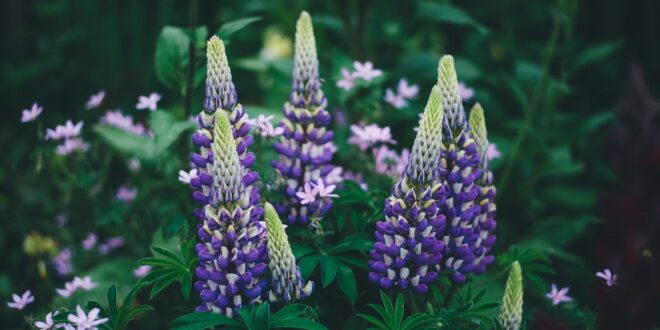Kiwis are so good at growing veggies. Even the younger generation is coming on board with this essential skill. We don’t do too badly where annual (one or two season-only) flowers are concerned, either. But when it comes to perennial ornamentals (the long term, year-after-year flower power in our gardens), we’re not so up-to-the-mark. Perhaps because fertilizing veggies or annuals is all about heaping on as much nutrients as possible, and mainly at one time of the year – spring. Feeding a perennial flower bed, on the other hand, takes a little more know-how. Still, it’s not rocket science once you have a few essentials tucked under your belt. So, let us help you help your perennials bloom this summer, with these easy-to-understand principles:
Different strokes for different folks
Few perennial plants require heavy feeding. Less hungry plants (such as ornamental grasses, asters, wild flowers, and bergamot) will react badly if fed more than a modicum of fertiliser. On the other hand, hungry perennials such as day lilies, chrysanthemums, and the garden’s ‘tall folk’ (such as hollyhock, tall phlox, lupin, and delphinium) will chow down on extra nutrients. Moral of the story: do your research before applying fertilizer.
Use you noodle!
While it’s always best to research which perennials prefer heavy or light feeding, you can trust your instincts to a degree. If a perennial is slow growing (think ‘autumn joy’ sedum, lavender, and alliums), it’s unlikely to require more than a side dressing of compost. If you see a perennial romping away, mark it as probably in need of a summer top-up. It can help to understand a plant’s origins, too. If it hails from a mountainous region (as many poppies do), it will be used to ‘going without.’
Be cruel to be kind
You may feel you want to throw all the nutrients you can at your perennial garden, but over-feeding can have serious consequences. Feeding too heavily can encourage the rapid growth of foliage at the expense of blooms because your plants’ energy is going into leaf, rather than flower bud production. As well as poor blooming, over-fed perennials will become tall, and flop over at the first heavy rain fall. They will require more staking rather than being able to hold up their own weight. Over feeding, especially with artificial fertiliser, can expose perennials to insect infestation, and as the fertiliser breaks down, it can accumulate in the soil as harmful salts which can damage roots.
A safe bet
One of the safest ways to fertilise your perennials is to top dress with a 5 to 6cm layer of rich compost in spring. This will supply your moderate feeders with enough nutrients to last right through the growing season. The heavy feeders can receive an extra dose of well-rotted animal manure at the same time, and a second and third top-up of compost and manure in summer and early autumn. When using compost on the perennial garden, choose material that has been through a hot compost which has killed off seeds (no one wants to be standing on their perennial beds to reach a carpet of weeds).
Artificial fertiliser
In many cases, it’s simply not practical to obtain organic fertiliser (compost). Or it may be too much of an ask to shovel this heavy material onto your garden beds. If artificial fertiliser is your only option, apply it carefully. Sprinkle the fertiliser around the drip line of plants, and never drop it on new growth or into the crowns (centres) of foliage or flowers where it can ‘burn’ the plant material. Save yourself work by choosing a long life fertiliser pellet which will supply nutrients for up to several months depending on its strength (check container labels for details).
Suss out your soil
Soil type affects how often you need to fertilise your perennial beds, so know your garden before you start feeding it. If your soil is sandy, fertiliser may quickly wash through. If it’s clayish, it may accumulate more than is good for your plants.
A little knowledge goes a long way when it comes to pampering your perennials. Feed them, and they will pay you back in gorgeous colour!










Join the Discussion
Type out your comment here:
You must be logged in to post a comment.